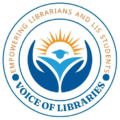PC-1 (Project Concept-1) document for establishing a digital library پروجیکٹ کانسیپٹ (PC-1) – ڈیجیٹل لائبریری
PC-1 (Project Concept-1) for establishing a digital library Preparing a PC-1 (Project Concept-1) document for establishing a digital library at […]
